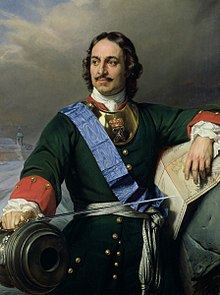Poltava 1709
Czar Peter the Great looked over the remnants of the defeated Swedish army. Sweden and Russia had been at war for a long time and this was the climactic victory Peter had been waiting for. It all began with the accession of the young monarch.
 |
| Peter the Great |
Peter Romanov had dedicated his career to changing his vast hermit kingdom into a modern European Empire. His first task was to move the capital from the ancient wooden city of Moscow. Instead of simply choosing a different city, Peter decided to build a new one. St. Petersburg was built to emulate and even rival the great capitals of Western Europe, such as London, Paris, Vienna, and Stockholm. Architects from France and Germany designed the city’s layout and buildings. French became the official language at the Russian court. Yet despite the advances, Russia had a long way to go. Peter knew that in order to advance Russia further, he needed to trade with Europe and in order to trade with Europe, Russia needed a fleet and merchant marine. The problem was Sweden.
 |
| Winter Palace Petersburg |
After Gustavus Adolphus invaded northern Europe during the Thirty Year’s War, Sweden had been a continental power. The subsequent Swedish monarchs turned the Baltic Sea into a Swedish Lake, keeping the Russians out. This state of affairs ultimately led to war, a war that ended with the battle of Poltava. Ten years after the battle, the Stockholm Treaties granted Russia large territories on the Baltic, opening up the rest of Europe to Russia’s vast untapped resources. Peter’s subsequent successor, Czarina Catherine the Great, conquered the Crimean Peninsula from the Ottoman Turks and opened up the Black Sea to Russian trade with the Mediterranean. Eventually, Russia became a lead player on the European stage and even expanded east. They didn’t stop expanding east until they reached the Pacific Ocean. Ultimately, the great empire that Peter and Catherine had created fell apart during the First World War and fomented into a communist revolution. But that’s a story for another day.

No comments:
Post a Comment